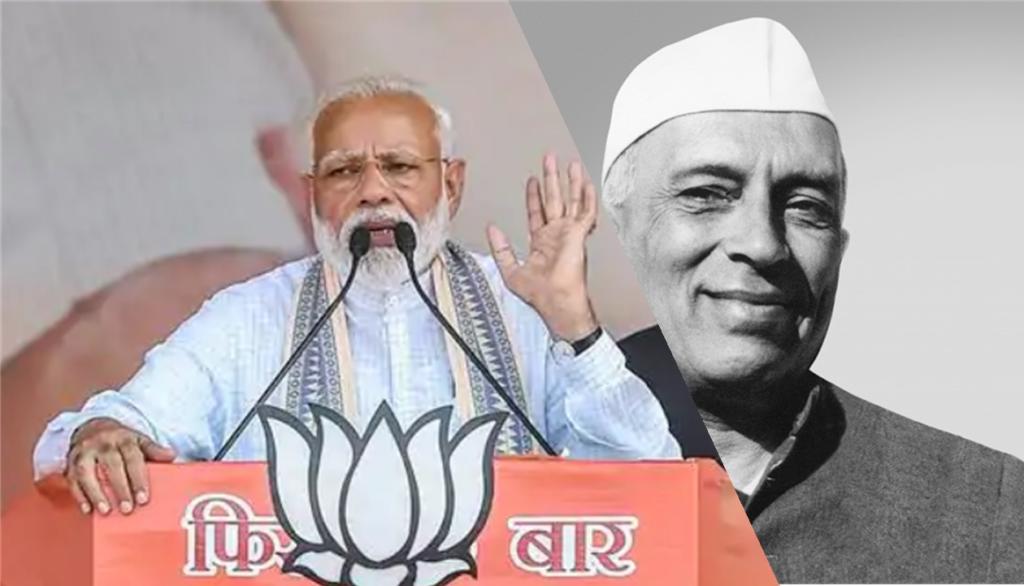During a speech in Kaushambi, PM Modi has mentioned details of a stampede that killed around 1000 people in the Nehru era. This stampede in 1954 Kumbh Mela happened as Nehru was visiting the location and all officials were busy in catering to the arrangements for the same.
“When Pundit Nehru was the Prime minister he had visited the Kumbh mela, then there was the government of Congress from panchayat to the parliament. Then because of mismanagement, 1000 people had died due to a stampede, however, to save Pundit Nehru’s image, this news was shoved under the carpet”
जब पंडित नेहरु प्रधानमंत्री थे तो वो एक बार कुंभ मेले में आये थे। तब पंचायत से पार्लियामेंट तक कांग्रेस की सरकार थी।
तब अव्यवस्था के कारण कुंभ में भगदड़ मच गई थी, हजारों लोग मारे गए थे।
लेकिन पंडित नेहरु पर कोई दाग न लग जाए, उसके लिए ये खबर दबा दी गई: पीएम #DeshBoleModiPhirSe
— BJP (@BJP4India) May 1, 2019
On that day, lakhs of devotees had arrived at Sangam to take a holy dip on the auspicious occasion of Mauni Amavasya. But by the end of the day, around 1000 people lay dead on the ghats and around 2000 others injured due to a stampede. Journalist NN Mukherjee, Aged 41 at the time, was at the Sangam to take pictures of the event. He writes about the event in his memoir published by Hindi magazine ‘Chayakriti’ in 1989.
“The day of Mouni Amavasya in Kumbh in 1954 was a day of tragedy for me besides, of course, a day of achievement as a press photographer. I was the only one who could take pictures of a stampede that killed over a thousand people, who were crushed at the Kumbh Mela. I get goosebumps even today recalling how I took photographs by crisscrossing over the bodies of dying or dead men, women, and children, who had fallen on the ground after a collision between two groups. My clothes were torn to pieces in the rush. A dying old woman had grabbed my pant with who knows what hope. I tried in vain to free my pant from her grip; and when the grip loosened, it had torn off a part of the cloth.”
NN Mukherjee further wrote, “It is also surprising that even though more than a thousand people trampled to death, the administrative officials were ignorant of it because till these officials were enjoying tea and snacks at the Government House (today’s Medical College) till four o’clock.”
However, the most striking part of the entire fiasco was the media cover-up ordered by the administration. NN Mukherjee wrote:
“Government officials rejected the reports of over a thousand people dying in the stampede. They issued a press note stating that only some beggars had been crushed to death. We presented before the officials the photos showing women wearing costly ornaments among the deceased, indicating that they came from well-off families.”
Even the dead were not accorded dignity in the aftermath. “On the second day of the accident, the administration made mounds of bodies and set them on fire. No photographer was allowed near the site. To take photos, I dressed like a villager, carried a small camera in an umbrella and pretended that I was there to see the body of my grandmother one last time. I fell on the feet of a constable…one official allowed me on the condition that I return quickly after seeing my ‘grandmother’.
NN Mukherjee’s daring journalism came with a cost. He had to face the brunt from even the highest of authorities.
“I ran towards the bodies and fell on the body of an old woman crying. Then I quickly took a photo of the burning pile of bodies. When the picture was published the next day, then Chief Minister Govind Ballabh Pant let out a curse, ‘Where is the H******a photographer?’ It was a big compliment for me.”
This incident is surely just the tip of the iceberg which has been kept away in the dark to preserve and perpetuate the ‘clean’ image of the Nehru-Gandhi dynasty. The strong control over the media machinery helped Pundit Nehru maintain a suitable flow of information favorable to his politics however critical elements were shoved under the carpet. The deliberate cover-up of this horrendous stampede which saw over a thousand children, women and men losing their lives is a striking example of patronage which Pundit Nehru’s enjoyed from the media. The remnants of this ‘patronage’ from the time of Pundit Nehru are still seen in varied forms in the Indian media, for the Gandhi –Nehru Dynasty.
